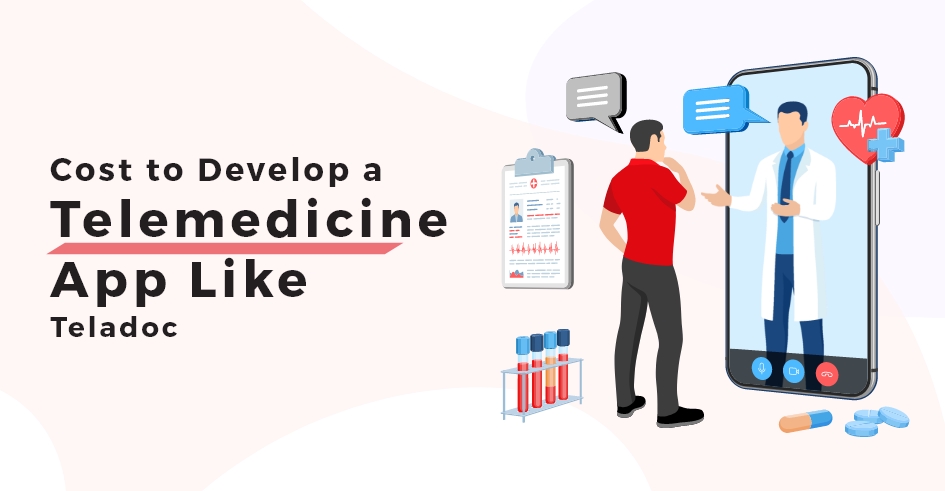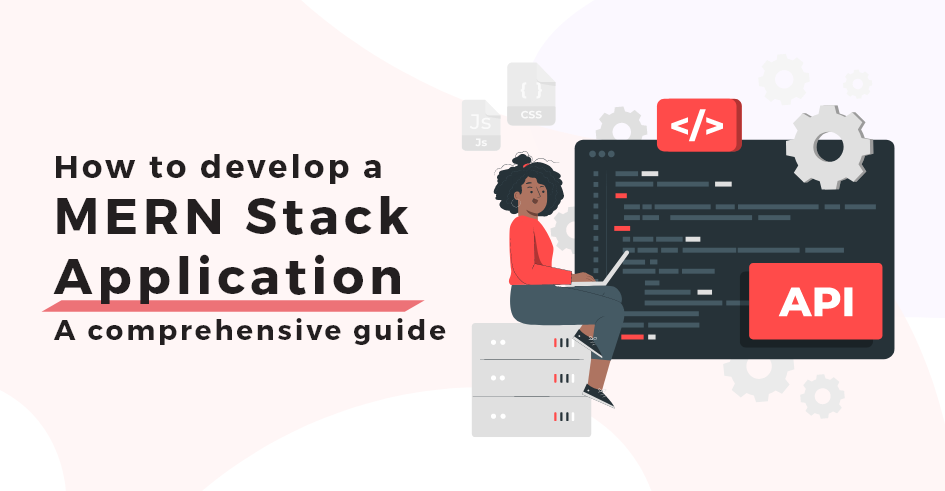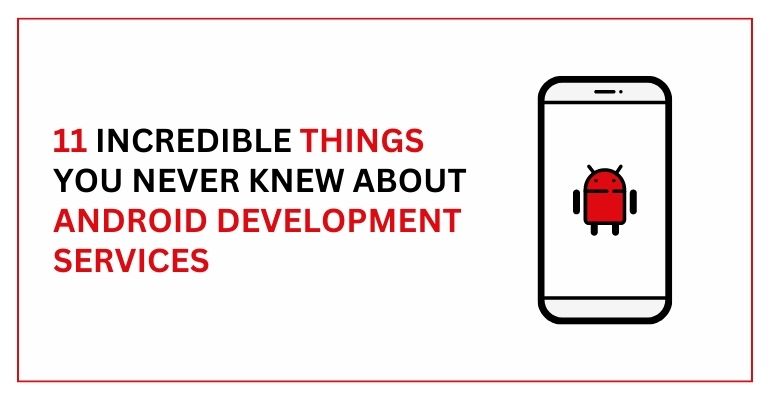As someone who’s been following the rise of telemedicine, I’m constantly impressed by how apps like Teladoc are transforming healthcare delivery. But for many entrepreneurs, the big question is: how much does it cost to build a similar app?
In this guide, I’ll break down the key factors influencing telemedicine app development costs and provide insights to help you estimate your budget.
Telehealth application is a convenient tool that allows patients to connect with doctors remotely, offering a glimpse into the future of medicine. With the telehealth market expected to nearly triple in size by 2030 (from $115 billion in 2023 to $286.22 billion), it’s clear that consumer demand for virtual healthcare services is on the rise. But how do people view the Telehealth app? Is it truly effective? The answer is that in the coming five years, individuals anticipate an increased reliance on virtual healthcare services for their medical needs. (Bain).
Here at TechnBrains, our team of experienced developers has helped numerous clients navigate the complexities of telemedicine app development, and we’re here to share our expertise as a Telemedicine App Development Company.
What Is A Telemedicine App?
A telemedicine app is a mobile application that allows patients to connect with healthcare providers remotely using telecommunication technologies.
How much does it cost to make an app like Teladoc?
| App Complexity |
Estimated Cost Range |
| Basic App (Appointment Scheduling, Video Chat) |
$40,000 – $60,000 |
| Medium Complexity App (Appointment Reminders, Integrations) |
$60,000 – $90,000 |
| Advanced App (AI Features, Multi-party Consultations, Wearable Integration) |
$90,000 – $300,000+ |
While providing an exact cost upfront depends on the app’s complexity and features, here’s a framework for estimating your telemedicine app development budget:
- Basic Telemedicine App: The cost of a basic app with core functionalities like appointment scheduling, video chat, and messaging could range from $40,000 to $60,000.
- Medium Complexity App: An app with additional features like appointment reminders, prescription management, and basic integrations might cost between $60,000 and $90,000.
- Advanced Telemedicine App: The cost of a feature-rich app with functionalities like multi-specialty consultations, AI-powered tools, and EHR integration could range from $90,000 to $300,000 or more.
Factors Affecting Telemedicine App Development
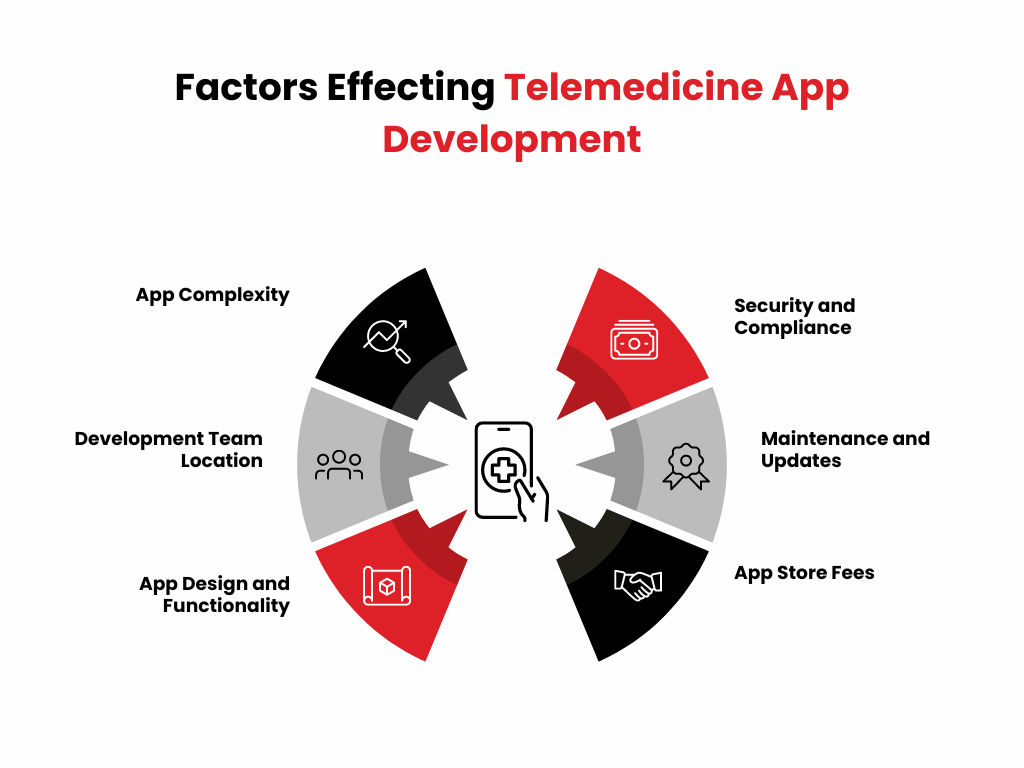
The cost of developing a telemedicine app can vary significantly depending on several key factors. Here’s a breakdown of the primary influences:
App Complexity
We understand that complexity directly impacts cost. A basic app with appointment scheduling and video chat uses well-established technologies. However, features like AI-powered symptom checkers or chatbots involve advanced techniques like natural language processing (NLP) and machine learning (ML), requiring specialized developers and potentially third-party integrations, which can significantly increase development time and cost.
- Basic App (Appointment Scheduling, Video Chat): $40,000 – $60,000
- Medium Complexity App (Appointment Reminders, Basic Integrations): $60,000 – $90,000
- Advanced App (AI Features, Multi-party Consultations, Wearable Integration): $90,000 – $300,000+
Remember, these are estimates. The final cost depends on the specific functionalities you choose.
Development Team Location
Hiring a local development team may involve higher hourly rates compared to outsourcing to other regions. However, partnering with local developers can offer advantages like a deeper understanding of regulatory requirements and user needs specific to your target market.
App Design and Functionality
A user-friendly and intuitive design with features like secure messaging and patient portals will impact the development cost. Additional features like AI-powered symptom checkers or chatbots will further increase the development time and cost.
Security and Compliance
Telemedicine apps handle sensitive patient data, necessitating robust security measures and adherence to data privacy regulations like HIPAA. The level of security required will influence the development cost. TechnBrains prioritizes building apps with strong security features like encryption and access controls to ensure patient data privacy.
Ongoing Maintenance and Updates
Factor in the cost of ongoing maintenance and updates to ensure your app remains secure, functional, and compatible with evolving operating systems.
Beyond Development
The development cost is just one aspect to consider. Here are some additional ongoing expenses to factor in:
1. App Store Fees
There are ongoing fees associated with publishing and maintaining your app on the Apple App Store and Google Play Store. Apple charges a 30% fee for apps and in-app purchases on the iOS, iPadOS, watchOS, and macOS App Store. According to the Google Play Store fee information page, developers are charged service fees for selling apps and in-app products through Google Play’s billing system or an Alternative Billing System. The fee can range from 15% or less to as high as 30%, depending on revenue and participation in certain programs.
2. Marketing and User Acquisition
Developing a successful app requires a marketing strategy to attract patients and healthcare providers. TechnBrains can help you develop a marketing strategy tailored to your target audience. Consider teaming up with TechnBrains, which has skilled developers in rapid application development. They can assist you in creating a targeted marketing strategy to reach your ideal audience.
3. Compliance Maintenance
While the cost of HIPAA compliance can vary depending on your organization’s size and complexity, there are some baseline estimates to consider. The Department of Health and Human Services (HHS) itself offered estimates shortly after the HIPAA Final Rule was released in 2013. These included costs associated with updating the Notice of Privacy Practices ($80), breach notification requirements ($763), Business Associate Agreements ($84), and security rule compliance for Business Associates ($283).
It’s important to remember that these are starting points, and additional costs may arise depending on your specific needs. TechnBrains can help you understand the compliance requirements for your target market and recommend strategies for maintaining compliance.
Must-Have Features in a Telemedicine App: Your Pocket-Sized Doctor on Call
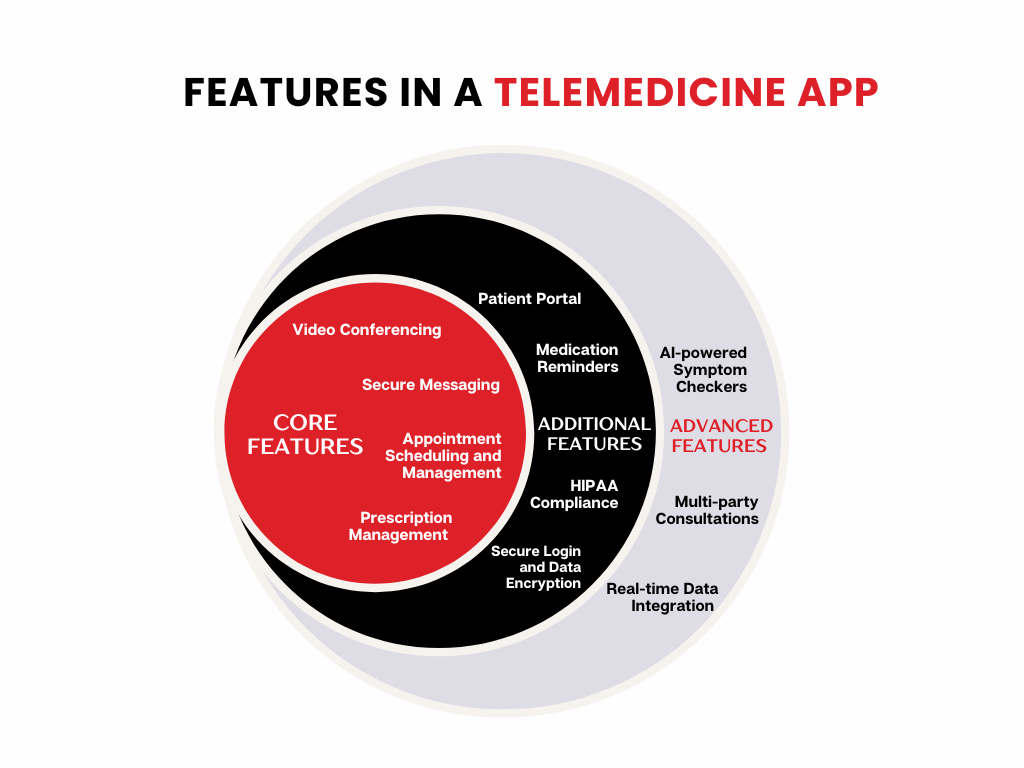
While Telemedicine apps give us the comfort of skipping the waiting room and having a doctor’s visit from the comfort of our couch, making this a reality requires some essential features to be incorporated into the Telehealth application. But with so many options available, what are the important features in a telemedicine app? Let’s explore the must-haves that will turn your app into a trusty companion for your well-being:
Core Features
- Video Conferencing: This is the heart of a telemedicine app, allowing you to see and interact with your doctor face-to-face, just like a traditional visit, but virtually! This eliminates the need for travel and provides a more personal connection compared to phone consultations.
- Secure Messaging: Need a quick follow-up question or want to send pictures of symptoms? Secure messaging lets you stay connected with your doctor between appointments, improving communication and care coordination.
- Appointment Scheduling and Management: Tired of phone calls and endless hold times? Schedule and manage appointments directly within the app, fitting them seamlessly into your busy life. This feature streamlines the appointment process for both patients and healthcare providers.
- Prescription Management (where allowed): No more trips to the pharmacy! With proper regulations in place, some apps allow doctors to send prescriptions electronically, saving you time and hassle.
Additional Features
- Patient Portal: This secure section stores your medical history, lab results, and medication information, giving you a centralized hub for your health data and empowering you to take a more active role in managing your health.
- Medication Reminders: Never miss a dose again! Set reminders for your medications to ensure you stay on track with your treatment plan, improving medication adherence and health outcomes.
- HIPAA Compliance: Rest assured, your private health information is protected. Look for apps that adhere to HIPAA (Health Insurance Portability and Accountability Act) regulations, safeguarding your privacy and building trust with users.
- Secure Login and Data Encryption: Double down on security with features like two-factor authentication and encrypted data storage to keep your information safe. This builds trust and encourages wider adoption of the app.
Advanced Features (Consider for additional functionality)
- AI-powered Symptom Checkers: While not a substitute for professional diagnosis, AI assistants can provide preliminary insights based on your symptoms, empowering you to make informed decisions about your health and potentially avoid unnecessary visits.
- Multi-party Consultations: This feature allows patients to connect with multiple healthcare providers simultaneously, facilitating collaborative care and consultations with specialists improving the efficiency and effectiveness of treatment plans.
- Real-time Data Integration from Wearables: Integrate with wearable devices to collect real-time patient health data (heart rate, blood pressure, etc.). This data can provide valuable insights for doctors and allow for more personalized care plans.
By incorporating these features, your telemedicine app can become a valuable tool for patients, improving healthcare accessibility, convenience, and overall patient experience.
These features are the building blocks of a great telemedicine app. But remember, the best app is the one that best suits your needs. You can also head over to how to build a Healthcare App in detail so that you can prioritize the features that matter most to you.
What are you waiting for? Contact Us Now to Take control of your health from the palm of your hand.
Functionalities to Make an App like Teladoc
Teladoc, a leading telemedicine company with over 80 million users worldwide, has played a significant role in shaping the telemedicine landscape. Their success is a testament to the growing demand for convenient and accessible virtual healthcare services.
To compete with established players like Teladoc, your Telehealth application should offer a robust set of functionalities that cater to the evolving needs of patients and providers. Here are some key features to consider to Make an App like Teladoc along with some technical considerations:
- User Profiles and Secure Login: Allow patients and healthcare providers to create secure profiles for seamless access and data management.
- Appointment Scheduling and Management: Enable patients to schedule appointments, receive reminders, and manage their healthcare calendar.
- Secure Video Conferencing: Integrate high-quality video chat functionality for real-time consultations between patients and providers.
- Messaging and File Sharing: Facilitate secure communication between patients and providers for post-consultation questions and file sharing (e.g., lab results, prescriptions).
- Prescription Management: Allow doctors to electronically send prescriptions to pharmacies directly within the app (This feature requires integration with electronic prescribing systems and may have regulatory hurdles depending on your target market).
- Payment Processing: Integrate a secure payment gateway for patients to pay for consultations or medication refills conveniently.
- Integration with Electronic Health Records (EHR): Consider integrating with EHR systems to allow providers to access patient medical history during consultations (EHR integration can be complex and requires working with EHR vendors to ensure compatibility and data security).
How to Build An App Like Teladoc?
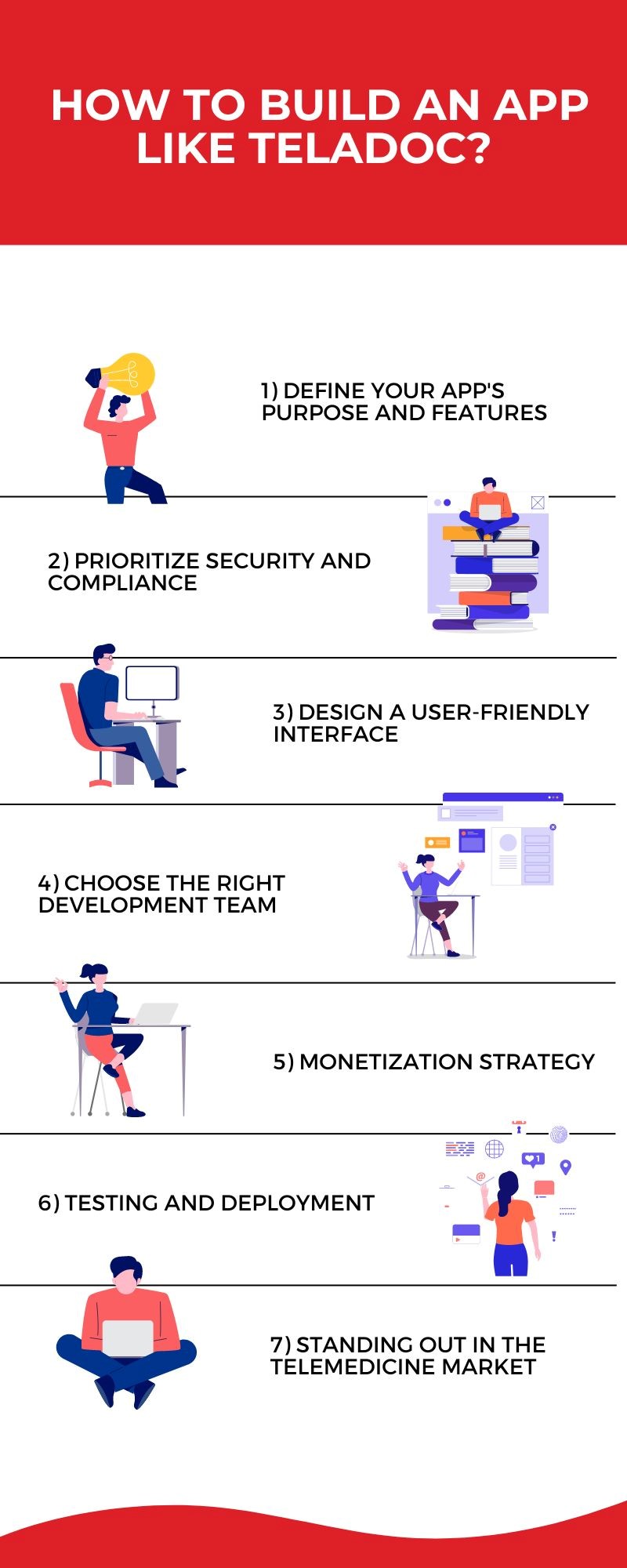
This section will walk you through the key steps involved in developing a successful telemedicine app, empowering you to make informed decisions throughout the process.
1. Define Your App’s Purpose and Features
- Target Audience: Who are you building this app for? Patients with general needs, those managing chronic conditions, or a specific demographic?
- Core Features: Start with essential functionalities like appointment scheduling, secure video chat, and messaging for patient-doctor communication.
- Advanced Features: Consider features like AI-powered symptom checkers, multi-party consultations (allowing patients to connect with multiple healthcare providers simultaneously), or real-time data integration from wearable devices.
2. Prioritize Security and Compliance
Telemedicine apps handle sensitive patient data. Here’s what to prioritize:
- HIPAA Compliance: To safeguard patient privacy, ensure your app adheres to the Health Insurance Portability and Accountability Act (HIPAA) regulations.
- Data Security: To protect user information, implement robust security measures like encryption and access controls. Partner with a development team experienced in building secure healthcare applications.
3. Design a User-Friendly Interface
A user-friendly interface is crucial for both patients and healthcare providers. Here are some key considerations:
- Intuitive Design: The app should be easy to navigate and understand, even for non-tech-savvy users.
- Accessibility Features: Ensure your app is accessible for users with disabilities.
- Seamless Workflow: Design a smooth flow for scheduling appointments, conducting consultations, and managing health information.
4. Choose the Right Development Team
- Experience: Partner with a development team that is experienced in building telemedicine applications. Look for a proven track record of success and expertise in HIPAA compliance.
- Location: Consider the advantages of a local development team that understands your target market’s regulatory landscape and user needs.
- Communication: Effective communication is key. Choose a team that actively listens to your vision and keeps you informed throughout the development process.
5. Monetization Strategy
How will you generate revenue from your app? Here are some popular options:
- Subscription Model: Offer tiered subscription plans with varying features and consultation limits.
- Pay-Per-Consultation: Allow patients to pay a fee for each consultation.
- Freemium Model: Provide a basic level of service for free and charge for premium features or unlimited consultations.
6. Testing and Deployment
- Rigorous Testing: Thoroughly test your app for functionality, security, and compatibility across different devices and operating systems.
- App Store Optimization (ASO): Optimize your app listing on the Apple App Store and Google Play Store to improve discoverability.
- Ongoing Maintenance: Plan for ongoing maintenance and updates to ensure your app remains secure, functional, and adapts to evolving technologies.
7. Standing Out in the Telemedicine Market
- Focus on a Niche: Consider catering your app to a specific patient population or medical specialty to differentiate yourself in a crowded market.
- Integrate with Existing Systems: Explore integrating with Electronic Health Records (EHR) systems to allow providers to access patient medical history during consultations.
- Advanced Technologies: Stay ahead of the curve by incorporating emerging technologies like artificial intelligence (AI) for virtual assistants or chatbots.
Telemedicine App Development Cost Calculator
This cost calculator will guide you through estimating the potential investment for your telemedicine application.
Here’s what to consider when building your cost estimate:
- Basic App (Appointment Scheduling, Video Chat): $40,000 – $60,000
- Medium Complexity App (Appointment Reminders, Integrations): $60,000 – $90,000
- Advanced App (AI Features, Multi-party Consultations, Wearable Integration): $90,000 – $300,000+
- AI-powered Symptom Checkers or Chatbots: +$10,000 – $30,000 (requires specialized developers and potentially third-party integrations)
- Multi-party Consultations: +$15,000 – $25,000 (requires robust video conferencing and secure data sharing functionalities)
- Real-time Data Integration from Wearables: +$10,000 – $20,000 (requires API integration and development considerations)
- Secure Messaging and Patient Portal: +$5,000 – $10,000
- Local Development Team: Expect higher hourly rates (estimate $40 – $70 per hour) but gain deeper regulatory understanding and user experience tailored to your target market.
- Outsourced Development Team: Lower hourly rates (Just $99 a day) but might require additional effort for regulatory compliance and user experience specific to your target market.
These are estimated costs and can vary depending on the specific functionalities and development team chosen. You can always book a Free Consultation With TechnBrains to Get Started Right Away!
Telemedicine Application Trends in 2024
The telemedicine industry is booming, with a value of USD 67.3 billion in 2021, and is projected to reach $312.2 billion by 2032, with a CAGR of 18.9% during the forecast period (2024 – 2032). The advancements in technology are constantly shaping how healthcare is delivered remotely. Here are some of the key trends to watch in telemedicine applications in 2024:
Integration of Advanced Technologies:
AI is transforming telemedicine by powering features like:
- Virtual assistants and chatbots for appointment scheduling, symptom checkers, and basic health information.
- AI-powered diagnostics to analyze patient data and support medical decision-making.
Machine learning algorithms can analyze vast datasets to identify patterns and trends in patient data, enabling:
- Personalized treatment plans tailored to individual patients.
- Predictive analytics to identify potential health risks and promote preventive care.
Virtual Reality (VR) and Augmented Reality (AR), These immersive technologies are being explored for:
- VR therapy to treat conditions like phobias and anxiety.
- AR-assisted surgical procedures to enhance visualization and precision.
Focus on Wearable Devices and Remote Patient Monitoring
Telemedicine apps will increasingly integrate with wearable devices to collect real-time patient health data, such as:
- Heart rate
- Blood pressure
- Blood sugar levels
- Sleep patterns
This data can be used for:
- Chronic disease management
- Early detection of potential health issues
- Personalized recommendations for diet and exercise
Enhanced User Experience (UX) and Accessibility
Telemedicine apps will prioritize user-friendly interfaces that are easy to navigate for patients of all technical abilities. Features like:
- Voice-activated commands
- Larger fonts and high-contrast displays
- Multilingual support will ensure inclusivity and accessibility for a wider range of users.
- Blockchain technology for secure data storage and access control.
- End-to-end encryption for communication between patients and providers.
- Compliance with regulations like HIPAA (US) and GDPR (EU).
Telemedicine for Mental Health
Telemedicine is playing an increasingly important role in addressing the growing demand for mental health services. Apps will offer features like:
- Video conferencing for therapy sessions.
- Online support groups for peer-to-peer interaction.
- Mental health chatbots for self-assessment and basic support.
By staying informed about these trends, you can create a telemedicine app with innovative solutions that improve healthcare access, affordability, and quality for patients around the world.
Finding the Right Telemedicine App Development Company
Developing a successful telemedicine app requires partnering with an experienced healthcare app development company like TechnBrains. Look for a company with:
- Proven Track Record in Telemedicine App Development: We have experience building secure and HIPAA-compliant telemedicine applications.
- Understanding of Regulatory Requirements: Our development team is familiar with the regulatory landscape governing telemedicine in your target market.
- Focus on User Experience (UX) and User Interface (UI) Design: We believe that a user-friendly and intuitive interface is essential for patient adoption and satisfaction. TechnBrains employs experienced UI/UX designers who understand how to create a seamless and intuitive user experience for both patients and healthcare providers.
- Scalability and Future-Proofing: Our expert healthcare app developers can design an app that can grow and adapt to future technological advancements. We build apps with a scalable architecture to accommodate future features and user growth.
- Security Expertise: We prioritize robust security measures to protect sensitive patient data. As mentioned earlier, TechnBrains prioritizes building apps with strong security features and stays updated on the latest security protocols to ensure patient data privacy.
Building a Telemedicine App – A Rewarding Investment
Developing a telemedicine app can be a significant investment, but the potential rewards are substantial. By offering a user-friendly and secure platform that caters to the growing demand for remote healthcare services, you can revolutionize patient access to care. Telemedicine apps put a doctor in your pocket! Here’s what makes a great app:
- See your doctor face-to-face with secure video conferencing.
- Stay connected between visits with secure messaging.
- Schedule appointments easily, ditch the phone calls.
- Skip the pharmacy line with e-prescriptions (where allowed).
- Manage your health data in a secure patient portal.
- Never miss a dose with medication reminders.
- Rest assured knowing your info is HIPAA-compliant.
- Double down on security with features like two-factor login and data encryption.
- Get preliminary insights with AI symptom checkers (but see a doctor for diagnosis!)
Carefully considering the features, development team, and ongoing costs will ensure your telemedicine app is not only cost-effective but also successful in the ever-evolving healthcare landscape.
Ready to Build Your Telemedicine App?
If you’re ready to leverage the power of telemedicine and make a positive impact on healthcare delivery, TechnBrains is here to help. We offer a free consultation to discuss your telemedicine app development needs and provide a custom quote based on your specific requirements.
Contact us today to turn your telemedicine app vision into reality!


